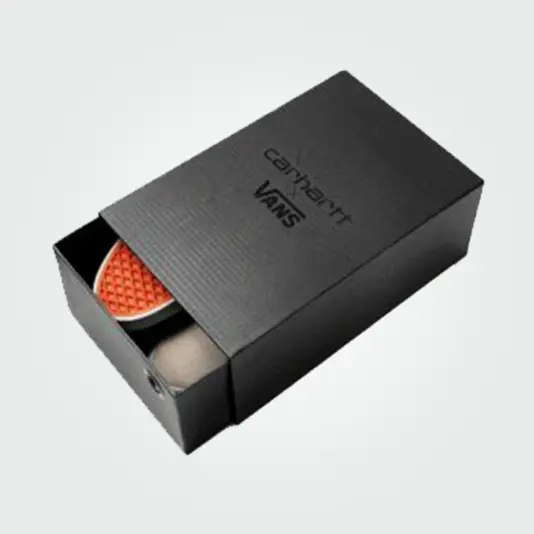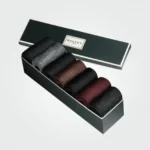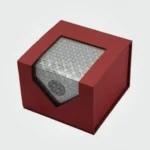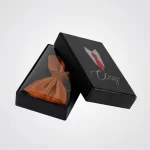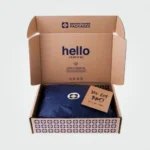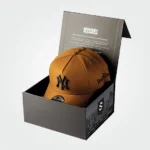Shoe Boxes
Custom Shoe Boxes
Step up your packaging game with our Custom Shoe Boxes. Thoughtfully crafted to offer both protection and panache, these boxes serve as the perfect haven for every kind of footwear, from sleek stilettos to rugged boots. Created with keen attention to detail in the USA, they enhance the allure of your footwear, promising a first impression that resonates with style. Delve into diverse design options, from minimalist chic for formal shoes to vibrant and dynamic for casual wear. With our Custom Shoe Boxes, you’re not just packaging footwear; you’re delivering a luxurious experience, one pair at a time.
Shoe boxes are a crucial part of the shoe industry. They serve as a protective and presentable packaging for shoes and are essential for retail sales and storage. With the growing popularity of e-commerce, the demand for high-quality shoe boxes has increased, and there is a wide range of options available in the market. In this post, we will discuss different aspects of shoe boxes including packaging, box styles, material used, different types, and their merits and demerits.
Shoe Packaging
Shoe boxes are used to package and store shoes. They protect shoes from dust, scratches, and any other type of damage. They also make it easy to transport shoes from one place to another. The packaging of the shoe box is a crucial factor to consider when choosing the right one. It should be sturdy and durable enough to protect the shoes during transit or storage.
Popular Styles of Shoe Boxes
Shoe boxes come in various styles including tuck-top, hinged lid, flip-top, and sliding lid. Tuck-top boxes are the most popular and cost-effective option. Hinged lid boxes are more secure and keep the shoes inside safely. Flip-top boxes are convenient for easy access and provide a clear view of the shoes. Sliding lid boxes are a great option for shoes with a unique design. The style of the shoe box is a matter of personal preference, and it depends on the intended use of the shoe box.
Material used for Shoe Boxes
Shoe boxes are made from various materials including cardboard, corrugated cardboard, plastic, and metal. Cardboard is the most popular material due to its affordability, availability, and versatility. Corrugated cardboard provides additional strength and protection, making it a great option for shipping. Plastic shoe boxes are durable and lightweight, making them a great option for storage. Metal shoe boxes are a great option for high-end shoes, as they provide a unique look and extra protection. The choice of material depends on the intended use of the shoe box and personal preference.
Different types of Shoe Boxes
There are various types of shoe boxes, including standard, premium, and custom shoe boxes. Standard shoe boxes are the most common and are widely used in the retail industry. Premium shoe boxes are made from higher-quality materials and offer additional features such as clear windows and custom printing. Custom shoe boxes are designed to meet specific requirements and are a great option for companies looking to promote their brand. The type of shoe box to choose depends on the intended use and personal preference.
Merits of Shoe Boxes
Shoe boxes have several advantages, including the protection of shoes from dust and damage, easy transport and storage of shoes, and the ability to be custom printed with branding or other designs. They also help keep shoes organized and in good condition.
Demerits of Shoe Boxes
However, shoe boxes also have some drawbacks, including the cost, which can be relatively expensive compared to other types of packaging. They can also take up a lot of space, especially for storage, and some materials used in making shoe boxes are not environmentally friendly. In conclusion, shoe boxes play an important role in the shoe industry and are a crucial aspect to consider when choosing the right one. With the wide range of options available in the market, it is essential to consider factors such as packaging, box styles, material used, and type to choose the right shoe box.
Custom Shoe Boxes for Brand Promotion
Custom shoe boxes are a popular option for businesses and individuals looking to promote their brand and create a unique packaging solution for their shoes. Custom shoe boxes can be designed to meet specific requirements and can be customized in terms of size, shape, color, and material.
Benefits of Custom Shoe Boxes:
Drawbacks of Custom Shoe Boxes:
Custom shoe boxes are a great option for businesses looking to promote their brand and create a unique packaging solution for their shoes. However, it is important to consider the cost and effort required to design and produce custom shoe boxes before making a decision.
The Best way to store shoes
The best way to store shoes depends on various factors such as the type of shoes, frequency of use, and storage space available. Here are some general tips for storing shoes:
Proper storage is important to preserve the condition and extend the life of shoes. By following these tips, you can ensure that your shoes are well-protected and in good condition for many years to come.



